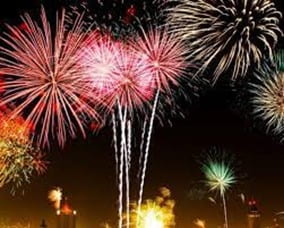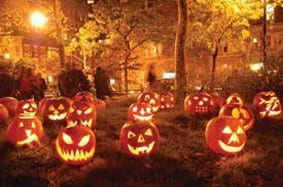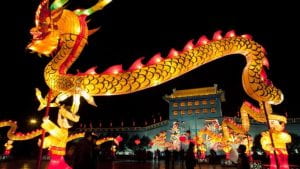Written by Matt Lastovka
Many of the holidays we celebrate today have connections to ancient celebrations. The timing and customs of these ancient celebrations were often determined by astronomical events, like solstices and the phases of the moon. The holidays we celebrate today that can trace their roots back to those ancient celebrations can still retain their connections to those astronomical events. Ever wondered why Christmas is celebrated on December 25, or why the Chinese New Year will start on January 22, 2023? Here, we’ll look at some commonly celebrated holidays and festivals and how they are influenced by astronomical events.
Christmas:
Christmas was born from pagan origins. The winter solstice in December is the darkest day of the year. The pagans in Europe lit candles and bonfires to keep the darkness at bay. They also brought evergreen trees into their homes. Evergreen trees stayed green even through the darkest and coldest parts of the year, so they were thought to hold special powers to repel the darkness and bring back the light. The Romans incorporated these traditions into their own celebrations. The Romans celebrated two holidays around the winter solstice: Saturnalia and Dies Natalis Solis Invictus. Saturnalia is a celebration honoring the Roman agricultural god Saturn and incorporated many of the older pagan traditions. It was celebrated for several days around the winter solstice. Dies Natalis Solis Invictus, also known as the “Birth of the Invincible Sun” was the celebration of the birth of the Roman god Sol, or the Sun. It is the celebration of the sun renewing itself and defeating the cold winter. It was celebrated on December 25. As Christianity spread across Europe, pagan festivals were replaced with Christian holidays. The date of Jesus’ birth was placed on December 25 and many of the traditions of the ancient Roman festivals it replaced were incorporated into the celebrations of Christmas.
New Year’s Day:
We celebrate New Year’s Day on January 1st of each year. That is the first day of the Gregorian calendar, in use in most of the world today. Like most solar calendars, this day occurs near the winter solstice. One solar year is equivalent to the time it takes for the Earth to complete one revolution around the Sun. However, unlike other holidays, the specific date of the new year was set by law, not by any specific astronomical event, making it unlike many of the other holidays on this list.
Halloween:
Halloween occurs midway between the autumnal equinox and the winter solstice, also called a “cross-quarter date.” The Celts in the British Isles used cross-quarter days to mark transitions between the seasons. They considered Halloween to be the transition between summer and winter, the transition between light and dark, or life and death. According to Celtic folklore, people who had died the previous year returned to their former homes for a final visit the night of Halloween. People would set out food for those spirits to help them on their journey. This tradition morphed into the celebrations of Halloween we celebrate today.
Ramadan:
Ramadan is the ninth month of the Islamic calendar. The Islamic calendar is a lunar calendar consisting of 12 lunar months. A lunar calendar relies on the phases of the moon to determine the lengths of the months. The Islamic calendar sets the beginning of each month by the first sighting of the moon’s crescent shortly after sunset, which happens just after the new moon. This contrasts with other lunar calendars, which use the new moon as the beginning of each new month. Ramadan commemorates Muhammad’s first revelation, an event where the angel Gabriel revealed to Muhammad the beginnings of what would later become the Qur’an. Ramadan is marked by fasting from dawn until sunset.
Chinese New Year:
The Chinese New Year is commonly referred to as the Spring Festival. It marks the end of winter and the beginning of the spring season. It is celebrated at the beginning of the new year on the traditional lunisolar Chinese calendar. A lunisolar calendar combines features of both lunar and solar calendars. A lunar calendar uses the phases of the moon to determine the lengths of months and a solar calendar uses solstices and equinoxes to determine the length of the year and is consistent with the seasons. The final month of the Chinese calendar contains the winter solstice. The first new moon following the winter solstice marks the first day of the Chinese New Year. This usually occurs during late January or early February in the Gregorian calendar (In 2022, it was February 1).
Passover:
Passover is a major Jewish holiday that celebrates the Biblical story of the Israelites’ escape from slavery in Egypt. It occurs on the 15th day of the month of Nisan, the first month of the Hebrew calendar. The Hebrew calendar is a lunisolar calendar, where there are twelve lunar months with the length determined by the phases of the moon and the year based on the solar year. Since Passover is a spring festival, so the 15th day of Nisan typically begins on the night of a full moon after the northern vernal (spring) equinox. However, since the twelve lunar cycles together are shorter than the solar year, leap months are added periodically to bring the calendar back in line with the solar year. These leap months sometimes make it necessary to start Passover on the second full moon after the vernal equinox, as in 2016.





